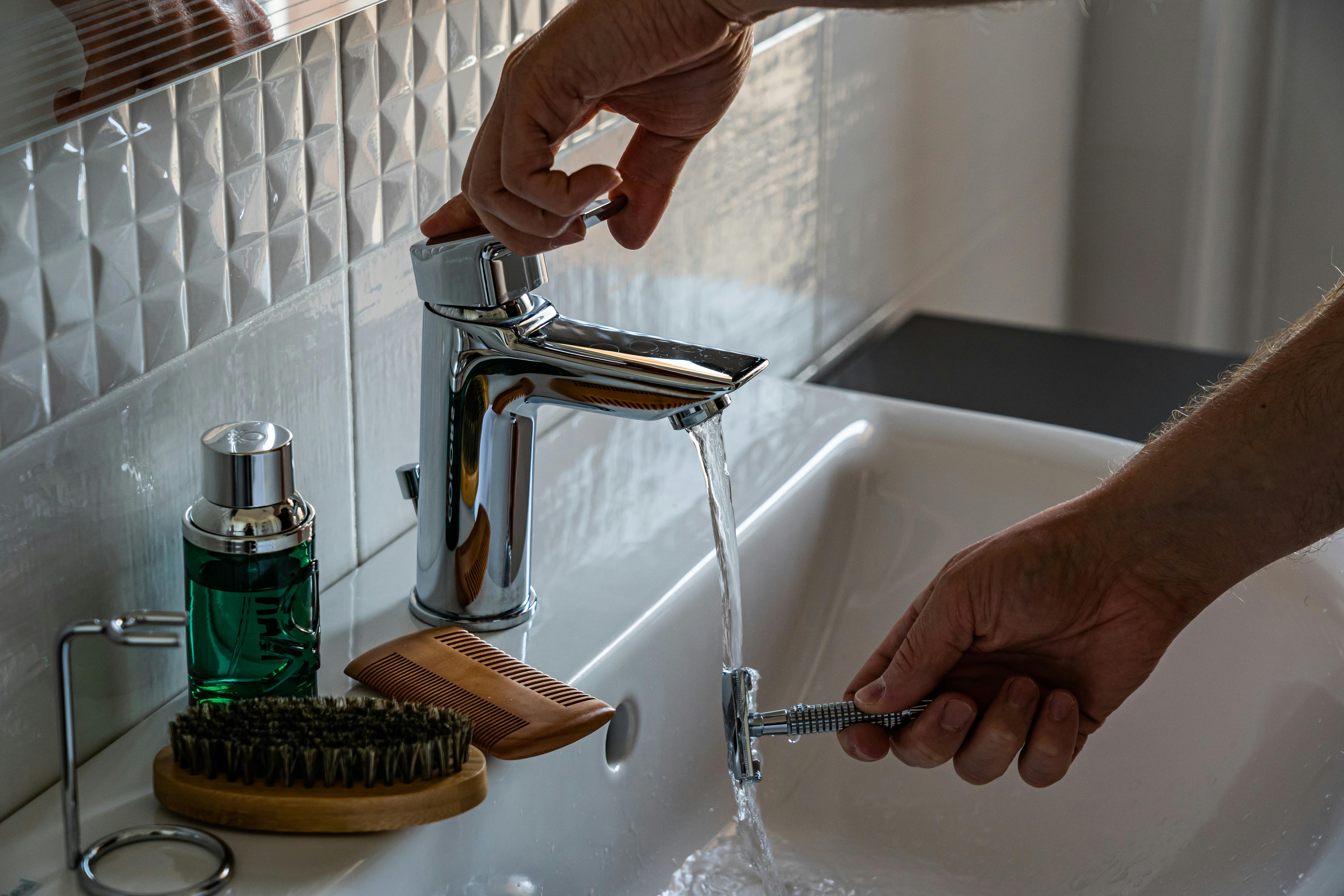Effective Ways to Gut a Fish: Practical Tips for 2025

Effective Ways to Gut a Fish: Practical Tips for 2025
Gutting a fish is a fundamental skill that every angler should master, whether for personal consumption or culinary pursuits. Understanding how to gut a fish not only enhances your fishing experience but also ensures that you maintain the fish's quality and hygiene during preparation. In this article, we will delve into the most effective fish gutting techniques, providing practical tips and best practices for both beginners and seasoned fishers alike. Whether you’re cleaning freshwater fish like trout and bass or saltwater species such as mackerel and sardines, we've curated expert insights that cover everything from essential tools to safe handling practices.
As we embark on this journey of fish preparation, you’ll discover important steps in the gutting process, recommended fish cleaning tools, and techniques that ensure the best results. We'll also address critical aspects of fish hygiene and safety, which are paramount when handling your catch. By the end of this guide, you’ll be equipped with the knowledge and confidence to clean fish properly and enjoy the fruits of your fishing efforts in the kitchen.
Key takeaways include practical gutting steps, tips for maintaining fish hygiene, techniques suited for different fish species, and the importance of using the right equipment. Let’s dive into these essential methods!
Essential Tools for Successful Fish Gutting
Whether you're an aspiring cook or an outdoor enthusiast, having the right equipment for gutting fish can make a significant difference in your experience and outcomes. Proper fish cleaning tools are not only essential for efficiency but also for maintaining hygiene. Understanding how to utilize these tools correctly will enhance your fish gutting process and ensure excellent results.
Gutting Knife Selection
The gutting knife is the most critical tool in your fish cleaning arsenal. A good quality gutting knife should be sharp, flexible, and designed specifically for fish. Look for knives with a narrow blade that allows you to maneuver around the delicate elements of the fish’s anatomy. Keeping your knife sharp is crucial, as a dull blade can lead to rough cuts and could risk the integrity of the fish.
When choosing your gutting knife, consider blade length and comfort, as well as the handle grip that allows for secure handling. Popular brands often provide knives at varying price points, making it accessible for beginners and professionals alike. Choosing the right knife mitigates the risk of accidental injury and improves your gutting efficiency.
Cleaning Station Setup
Establishing a proper fish cleaning station is an essential step before starting the gutting process. Ensure your workspace is clean and well-organized to promote safety and efficiency. Whether you are gutting indoors or outdoors, use a sturdy cutting board and ensure that all your tools, including your gutting knife, are within easy reach.
Incorporating a clean bucket for the fish guts disposal is vital to maintaining hygiene. After gutting, always clean your knives and surfaces with hot, soapy water to prevent the spread of bacteria and prepare for your next fishing trip.
Step-by-Step Guide to Gutting Fish
Now that you are equipped with the proper tools, let’s walk through the step-by-step process for gutting a fish. This guide will highlight techniques for both freshwater and saltwater species, emphasizing the importance of methodical and safe approaches throughout.
Gutting Fish Process
Gutting a fish involves making careful incisions to remove internal organs while preventing contamination. Here’s how to proceed:
- Place the fish on your cutting board with the belly facing up.
- Using your gutting knife, make a shallow incision just behind the gills, going down towards the anal fin. Be careful not to puncture the gut.
- Once the initial cut is made, continue the incision along the belly towards the anal fin. Take your time to observe and avoid cutting into any organs.
- After reaching the anal fin, use your fingers to gently pull the entrails out. Make sure to remove the entire organ mass, as remaining guts can spoil the meat.
- Rinse the cavity thoroughly under cold water to clean out any remaining debris.
Gutting Techniques for Beginners
For beginners, mastering the gutting process can take a bit of practice. One effective strategy is to watch detailed tutorials or follow experienced fishers during their cleaning processes. Focus on the feel of the knife, the anatomy of the fish, and the safe handling of the gutting knife to establish muscle memory.
Common mistakes include making deep cuts that penetrate the internal organs and failing to clean the fish properly. Focus on precision and gentle motions to avoid mishaps. Additionally, don't hesitate to ask for guidance or participate in fish cleaning workshops to enhance your skills.
Cleaning Freshwater vs. Saltwater Fish
Understanding the differences between gutting freshwater and saltwater fish is essential for ensuring optimal results. Each species comes with its unique challenges and benefits. Let’s explore these distinctions and how they can impact your gutting process.
Unique Aspects of Freshwater Fish Gutting
Freshwater fish, like trout and bass, often have softer flesh and less pronounced bone structures. When gutting freshwater fish, remember to handle the fish delicately to maintain the integrity of the meat. Given that freshwater fish can also carry parasites, it’s crucial to ensure they are thoroughly cleaned and inspected during gutting.
Saltwater Fish Cleaning Techniques
In contrast, saltwater fish such as mackerel and sardines tend to have firmer flesh and more prominent bones. When gutting saltwater fish, you may also encounter more mucus and oil, necessitating thorough cleaning. Given their firm flesh, the gutting knife may also require a bit more pressure, but be cautious not to let the knife slip.
By understanding the nuances of each type of fish, you can tailor your gutting techniques for optimal freshness and quality.
Best Practices for Fish Cleaning and Hygiene
Maintaining proper hygiene and cleaning methods during the gutting process are crucial to ensure not only the quality of the fish but also the safety of those consuming it. Here are essential practices to follow.
Safe Fish Handling
Always wash your hands before and after handling fish to prevent contaminating other foods or surfaces. When possible, wear gloves to add an extra layer of protection. This is particularly important when dealing with sensitive species that might have parasites.
Disposal of Fish Guts
Proper disposal of fish guts is essential for both environmental concerns and hygiene. Many fishing regulations require the safe disposal of fish entrails away from water bodies to minimize pollution. Consider using a designated container for waste and check local guidelines for disposal practices.
Quick Q&A: Common Fish Gutting Questions
Q: How do I know when a fish is fresh enough to gut?
A: Look for clear eyes, bright red gills, and firm flesh. Avoid fish with a strong odor, slimy texture, or obvious signs of decay.
Q: Can I gut fish immediately after catching them?
A: Yes, gutting fish right after catching them is preferred for maintaining quality. However, if you can’t, keep your catch cool and avoid letting it sit in the sun.
Q: What are some common mistakes to avoid while gutting fish?
A: Be careful not to puncture the stomach, always use a sharp knife, and ensure proper hygiene throughout the process.
Q: Are there specific gutting techniques for different types of fish?
A: Yes, techniques will vary based on the species, so it’s essential to familiarize yourself with the anatomy of the fish you are dealing with.
Q: Is it necessary to scale the fish before gutting?
A: Scaling depends on your cooking preferences. If you plan to cook the fish whole, it's advisable to scale it before gutting for easier handling.

Conclusion: Embracing the Art of Fish Gutting
Gutting fish may seem daunting at first, but with practice and the right tools, you can master this essential skill. The techniques shared in this guide serve as a roadmap to effective fish preparation, highlighting not only the step-by-step processes but also the importance of maintaining hygiene and safety. Whether you are simply looking to improve your fishing techniques or want to dive deeper into culinary arts, mastering the art of gutting will elevate your overall experience.
Next time you’re out fishing, remember these tips and techniques to transform your catch from stream to table successfully. Happy fishing and safe gutting!
